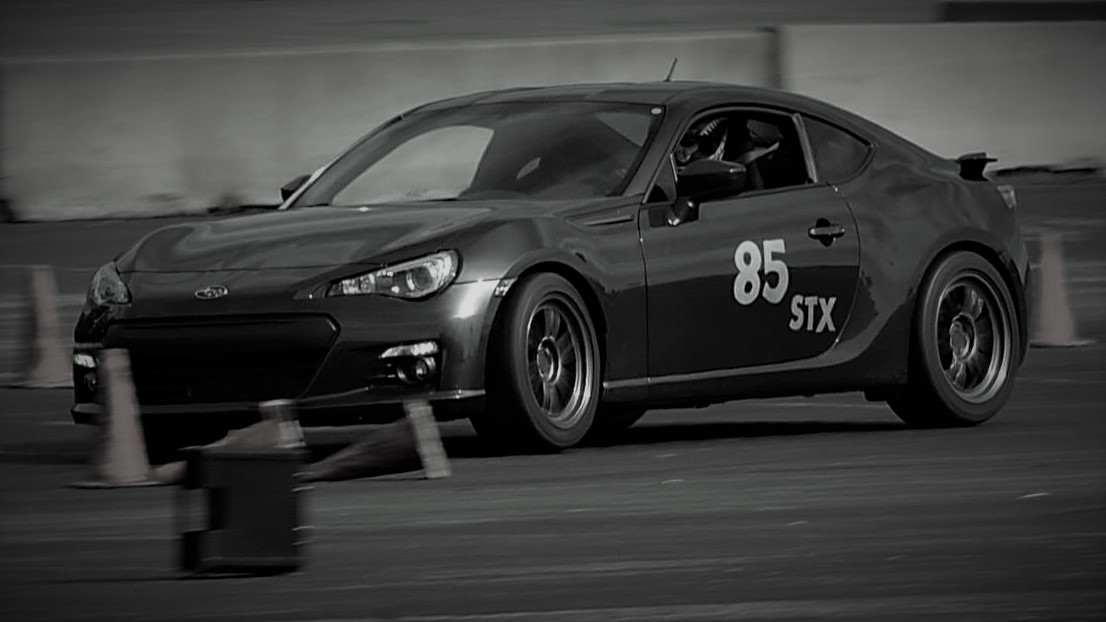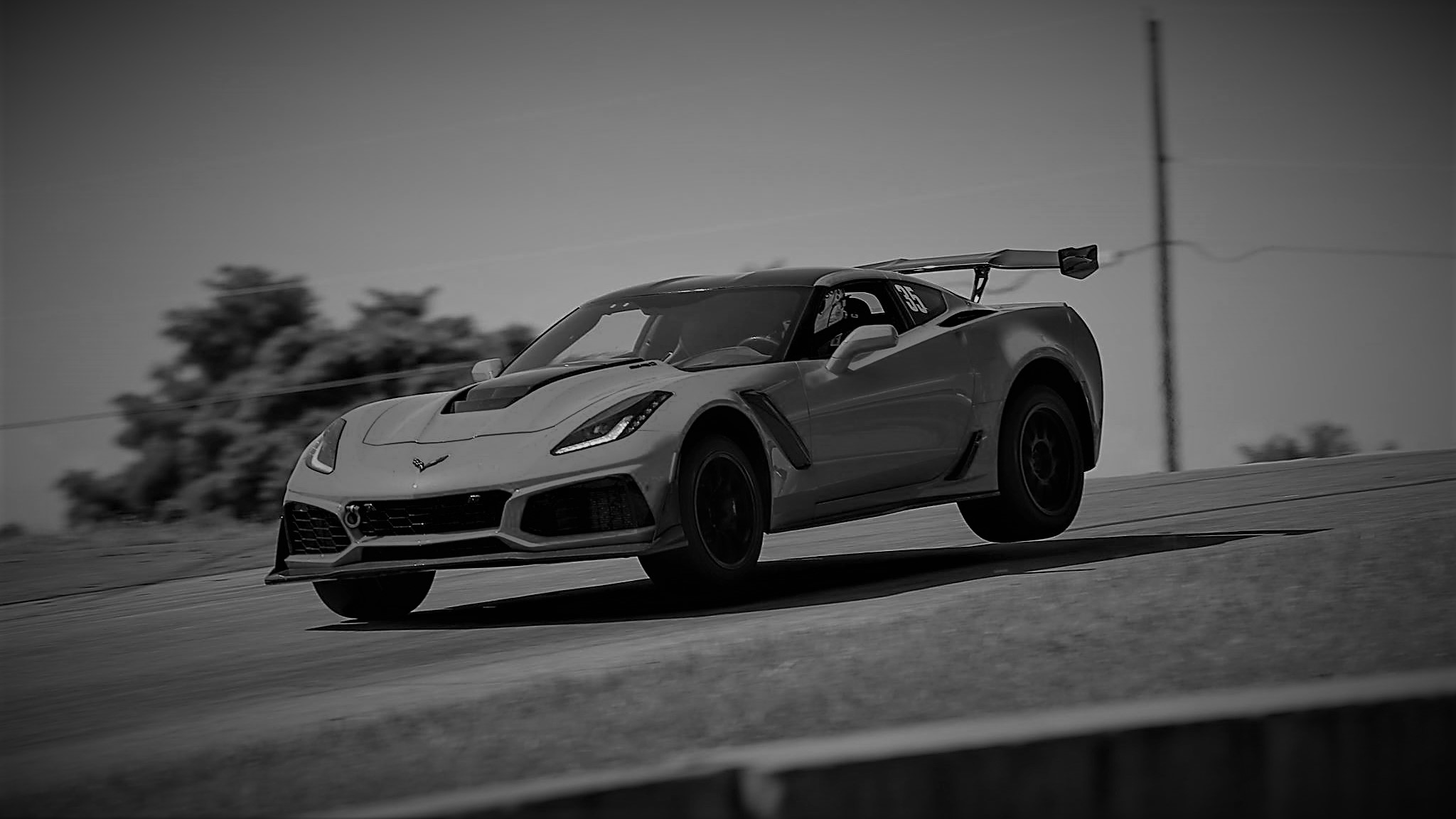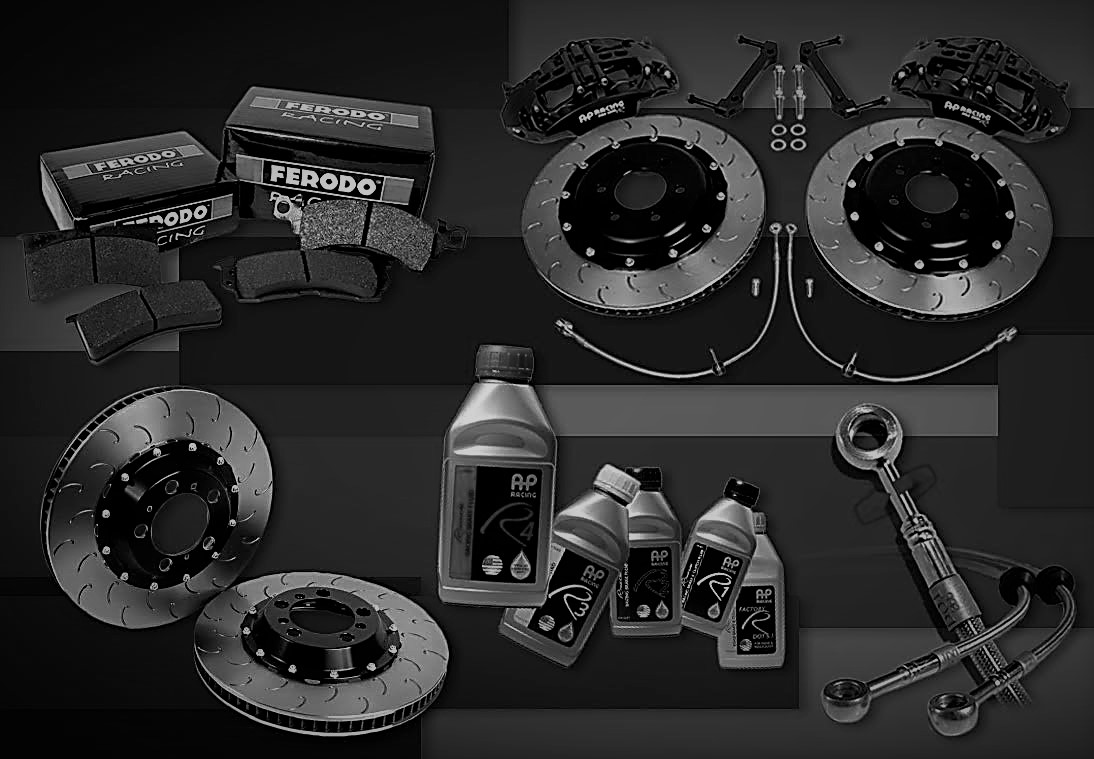Essex Brake Upgrade Guide: Pads, Discs, Lines, Fluid, Big Brake Kit
10.23.2018A common problem enthusiasts face when upgrading their brakes is that they don’t know which products most closely match their needs. There are a million different brake products on the market and understanding which is the most appropriate for your situation can not only dramatically improve your driving experience, it can save you a bunch of money! Your upgrade path should be dictated by how you plan to drive your car. In this article Essex High Performance Division Manager Jeff Ritter examines how different enthusiasts use their cars, and the most appropriate brake upgrades for each driving environment. If you find the long string of words below worrisome, just skip ahead to the video at the bottom of the article.
Daily Driver
If you never plan to do anything with your car other than drive it to work every day, there’s a solid chance you’ll be perfectly happy with the OEM brakes as delivered. Just about every modern car today has decent brakes, with far superior technology and performance vs. the cars our parents drove when we were kids. OEM brakes are designed for safety above all else. Any and all other considerations are secondary:- Shortest stopping distance possible- Occasionally, a kid chases a ball into the road, or a deer jumps from the trees at an inopportune moment. The goal is to stop the car in the shortest possible distance to avoid a collision. The basic brake components are selected to achieve that goal based on the vehicle layout (RWD, FWD, etc.), weight, power, tires, etc.
- Stability- Inclement weather, limited driver skill, and chance all create road conditions that negatively impact a vehicle’s stability. Modern brake systems are designed to maintain as much stability under as many conditions as possible. ABS, traction control, and stability control systems all allow a driver to turn while braking, and help keep the car pointed in the desired direction. These systems also contribute to the point above, getting the car stopped and safe as quickly as possible.
- Repeated stops at max load- Manufacturers know their cars will be driven in rush-hour traffic, filled to the brim with gear from a local big box store, and/or possibly towing something at the vehicle’s max recommended load rating. Under those conditions, the car needs to be able to stop repeatedly in an acceptable manner.
Achieving the above objectives are enough for most of the cars on the road. For a specialized sports car, the manufacturer usually goes a bit above and beyond these essentials. Factors such as pedal feel, pedal travel, pad compound feel, fade resistance under heavier than normal use, etc. all come into play. The manufacturer addresses these issues to make their car a competitive performer in the market, all while attempting to manage their costs as tightly as possible.
If your primary objective is for your car to safely transport you from one place to another, you’ll be fine leaving your stock brakes alone.

Spirited Street Driving
Enthusiasts tend to be a little tougher on equipment than ‘non-car people’. They accelerate, turn, and brake harder on a regular basis, and they have higher performance expectations. Aggressive driving on back roads, canyons, etc. puts more heat into the brake system than running errands ever could. While manufacturers expect a sports car to be driven harder than a minivan, exactly how much harder leaves a lot of room for interpretation. Your idea of being tough on brakes may differ vastly from the engineers’ thoughts on the subject. Below is a list of upgrades that can be considered for aggressive street driving, in order of importance:
- High Performance Brake Pads- If you plan to drive your car hard on the street, high performance pads will be your number one upgrade for improving brake feel and performance.Pad materials can have dramatically different maximum temperature thresholds, fade resistance wear rates, impact on discs, etc. As such, the topic of pad choice is beyond the scope of this article. At Essex, our top recommendation for spirited street driving pads is the Ferodo DS2500 compound.
- Slotted/Drilled Discs- If you upgrade your pads and still feel like you’re not getting enough bite out of them, you may want to consider slotted or drilled discs.
- Slotted discs provide more leading edges for a pad to bite into vs. a plain-face disc. Many people claim that the main purpose of slotted discs is for pad material and water to evacuate the pad/disc interface, but this is a secondary function. Slotted discs are marginally more prone to cracking than plain face discs, but the added performance of slotted discs is worth the trade-off to most enthusiasts (assuming the slot pattern is done correctly: i.e. AP Racing J Hook).
- Drilled discs, regardless of whether the holes are cast in or drilled after the casting process, are more prone to cracking than plain face or slotted discs. They do provide even more leading edges for pad bite, and a slight weight reduction. They also look snazzy.
- Slotted and drilled discs will wear your pads out a little more quickly than plain face discs. All those leading edges assist with bite, but also increase wear rates.
- Holes and slots will also make more scraping and whirring noises than plain face discs, so there are some NVH (Noise Vibration Harshness) trade offs as well.
- Stainless Steel Brake Lines- While most people won’t notice a tremendous difference under street driving conditions, SS lines can enhance pedal feel, offer greater protection against road debris, and offer a slightly faster reaction time for brake activation.
- High Performance Brake Fluid- It is highly unlikely that you’ll boil your brake fluid during aggressive street driving. The more likely scenario is that you’ll only need to flush your brake fluid at regular service intervals. When you do, it never hurts to go with a slightly higher spec than stock if you plan to drive your car hard off the beaten path.

AutoX / Autocross
Autocross presents a unique challenge for your car's brakes. Depending on the course layout, the amount of pad heat generated may not be any greater than stop-and-go traffic driving. Many times, you never get out of second gear, which means speeds are generally limited to roughly 60 mph or less. Additionally, the flowing nature of a well-designed autocross course means that you don't always scrub off a tremendous amount of speed entering each brake zone. Often, you're trail-braking as you approach the apex of the corner, rather than standing on the brakes in a straight line. Therefore, precise control and feedback is what you're looking for from your brakes. Here are some brake upgrades to consider if you autoX your car:
- High Performance Brake Pads- You’ll want a brake pad with good cold bite, predictable torque response, good all-weather performance, and a simple bed-in procedure. Our favorite at Essex is the Ferodo DS2500, which is one of the absolute best ‘do everything’ pads available on the market today. It works incredibly well on the street, at autoX, and for light track duty.
- Slotted/Drilled Discs- Braking feel is extremely important in autocross, so for many drivers, slotted or drilled discs are worth the investment for the added touch they impart. Wear rates and NVH are secondary concerns when you’re fighting for every hundredth of a second.
- Stainless Steel Brake Lines- As with discs, every little bit of added feel can mean the difference between winning or losing in a tightly contested AutoX. As such, properly made SS lines are a no-brainer upgrade with no downside. Our lines of choice are Spiegler Stainless Steel Brake Lines, which are constructed in Ohio from the finest components we have ever seen.
- High Performance Brake Fluid- While fade isn’t typically an issue at AutoX, your increased maintenance and continual setup changes will mean that you’re under the car tinkering with your brakes more than you would be if you were only driving it on the street. As such, keeping some high-quality brake fluid in the car as added insurance never hurts, nor does a good bleed for maintaining a firm and responsive brake pedal. AP Racing R2 fluid is our preferred choice for both street, AutoX, and certain track situations.
- Two-piece Brake Discs- Unsprung weight is the devil to the avid autocrosser. You should always be looking to maximize weight reduction within the boundaries of the rules (or outside those boundaries if you’re clever at cheating). Weight reduction in the wheels/brakes/suspension area is particularly beneficial to all aspects of acceleration, turning, and braking, which is the core of autoX. Two-piece discs can in some cases offer substantial weight savings. Aftermarket two-piece discs will have aluminum hats that are lighter the stock iron pieces, and their overall construction and vane structure may offer further weight savings. Since you probably won’t be burning your discs up at a rapid rate, the initial cost of a two-piece disc may be worth the weight loss (commonly $600-$1800 per pair). Check the price of replacement iron before making the commitment however. You will eventually have to change the discs since they are wear items. Also, keep the size of the disc in mind. A larger than stock 2-piece disc may weigh more than the OEM units! Also, the larger the diameter of the disc, the greater the moment of inertia, which makes it more difficult to spin the disc from rest. Essex prefers AP Racing 2-piece Competition J Hook discs for their incredible durability and cooling capacity.
- Caliper Upgrade- A caliper-only upgrade could be a viable weight reduction option if the calipers are designed to work properly with your OEM master cylinder and discs.
- Aluminum, fixed-piston, opposed calipers tend to weigh less than OEM cast slider calipers. In extreme cases such as AP Racing Radi-CAL calipers, aftermarket calipers can weigh several pounds less than OEM calipers, even when the OEM calipers have fewer pistons!
- However, slapping the calipers from a different vehicle onto yours can be a recipe for problems and headaches. While the parts may technically bolt onto the car, the actual performance may be significantly worse than stock. The main reason for this is improper brake bias, which is a topic for another discussion.
- Assuming bias is correct, fixed piston opposed calipers tend to offer substantially better feel, modulation, and a faster response than OEM sliders/floaters. They essentially remove the slack from the system and more quickly react to driver input.
- If the aftermarket caliper has substantially larger pads than stock, some of the overall weight savings may be offset by greater pad weight.
- Big Brake Kit / Complete Competition Brake System- A complete brake system could be beneficial in AutoX for several reasons:
- Feel- Far stiffer, opposed piston calipers can offer dramatic changes in brake pedal feel and modulation. Some highly competitive types will find it worth the price of entry for this reason alone.
- Brake Balance/Bias- Getting the proper balance is very important for AutoX and is closely related to the feel point above. If the piston sizes and disc diameter are not chosen properly (assuming you won’t be touching your OEM master cylinder), you will likely hurt your performance rather than help it. Increased (longer) stopping distances (the opposite of what you want!), long brake pedal travel, and poor brake pedal feel are just some of the potential negatives of a poorly engineered system. The ultimate big brake kit on the market is the Essex Designed AP Racing Competition Brake Kit.
- Weight- Many complete brake kits shave weight over the stock setup. Even if the stock components and aftermarket components are the same physical dimensions, the aftermarket setup will be lighter 9 times out of 10. Aluminum calipers and aluminum disc hats are typically lighter than the OEM sliders and one-piece iron discs. As a bonus, the optimized components can offer a host of benefits if you also track your autoX car. On the other hand, if you add a system with extremely large discs and a huge eight piston caliper, you may be adding unnecessary unsprung weight and rotational mass to the car, and hurting your performance in autocross.
HPDE (High Performance Drivers Education) / Track Day / Time Trial / Time Attack
At a track day, you will always put more heat into your brake system than you will on the street or at an autoX. Please reread that sentence! Track Days are really the first venue mentioned thus far where battling heat becomes the critical element in having an effective and reliable brake system. One of the most interesting aspects of HPDE is the wide range of speeds and driver ability across run groups. As such, it's difficult to recommend a blanket brake solution for a given vehicle driven at an HPDE.
After countless discussions with customers on this topic over the years, we believe there a few critical considerations when upgrading your brakes for an Track Day or Time Attack:
- Track layout
- Tire choice
- Other vehicle modifications
- Driving style and experience
A careful examination of these factors in your personal situation will help guide you towards an acceptable brake solution. When you need more assistance, call us! Keep in mind that all of these factors are related and cannot be considered in isolation from one another.
Track layout
Long straights followed by tight turns mean your car is decelerating from a very high speed to a very low speed, creating a high energy stop. The distance between stops will also impact the heat retained in your brakes. If a track layout has a steady succession of medium straights and tight turns (think Carolina Motorsports Park), your brakes don't have much time to cool between stops. That means heat will continually build. Flowing tracks with long sweepers are much easier on brakes (i.e. Willow Springs). Tracks with very long straights followed by tight turns can be devastating to your brakes (Watkins Glen, Road America, Ciruit of the Americas). Look closely at the track(s) you'll be driving to determine how demanding they will be on your brakes.
Tire choice
Tire choice is one of the single greatest factors in determining which
brake setup will work for you on the track. The stickier the tire, the
more brake you can use, and the more heat you will generate. More grip =
more heat. If you're running low grip OEM tires, or if it rains at an
event, you won't be able to generate as much grip, and you won't tax
your brakes as much.
Vehicle configuration/modification
All else held equal, more massive, faster cars place a greater strain on a brake system. A Corvette ZR1 will require a much larger rotor as a heat sink than a Subaru BRZ. If you strip 200lbs. out of your car (easier to accelerate), have a quality coilover system (higher cornering speeds), and add 40hp (greater acceleration out of turns), you're placing less demand on your brakes in terms of mass, but you'll need to slow down from higher speeds when entering turns. Ultimately, the car will be tougher on the brakes. Higher speeds increase brake demands at an exponential rate, while adding mass increases brake demands at a linear rate.
Driver experience
If you've never driven anywhere but the street, your first couple of trips to the track will most likely not tax your brake system too heavily, right? Not exactly. You being a complete track newb won't necessarily protect your stock brakes from total destruction. Novice drivers may be easier on the brakes because their corner exit speeds are lower, their terminal speeds entering brake zones are therefore lower, and there's less kinetic energy being transferred into heat during a given stop. That said, novice track drivers also tend to stab wildly at the brakes, stay on the brakes far too long, oscillate between on and off brake, and do all sorts of other things a pro driver would never do! The result can be some serious brake punishment. It's impossible to make a blanket statement that a novice driver will be fine on stock brake pads. Reality has proven that statement false countless times, particularly on the faster, heavier cars our customers often take to track days.
So where does that leave us when upgrading our brakes for a Track Days, HPDE, or Time Trial? The critical point is, every modification you make to your car and the nut behind the wheel will change the demands on your brake system, and you must adjust accordingly. Just because you successfully used a certain pad compound before, doesn't mean it will work again after you've installed your new turbo kit and Hoosiers. Chances are that after your 25th event, you'll be taxing your brakes very differently than you did during your first event. You'll be hitting higher speeds, entering and exiting corners faster and in a different way, and your car will likely have more grip and power than it did when you started (you'll also be much poorer, but likely happier!). If you typically run Limerock Park (a short track without many big braking zones) but decide to make a trip to Road America (a crazy fast track with huge brake demands), you need to reconsider how your brakes will be taxed. You must constantly evaluate the overall capabilities of your brake system, and not be afraid to try new brake setups as both you and your car evolve.
Finally, if you want to play it safe and not risk damage to the major components of your brake system, don't EVER drive an OEM brake pad on a road course. It may be more convenient and seem economical to run stock pads, but it will cost you time and money in the long run. There's also not much worse than wasted track time. When you're sitting in the pits watching your buddy rip down the front straight, and your stock pads are a steaming pile of dust stuck to the inside of your wheels, you'll be wishing you spent a couple hundred bucks and took the hour on Friday night to change your pads and bleed your fluid!
In the Essex Know Brakes video below, Jeff Ritter discusses the above topics and more. For more educational videos, be sure to check out the Essex Learning Center and FAQ.
Finally, if you enjoyed this article please be sure to pass it along to all of your enthusiast friends, and watch for more Know Brakes segments from the Essex team!
To see the brake products Essex offers for your car, click the image below, or enter your year, make, and model via the steering wheel icon at the top of your mobile device.
Written by Jeff Ritter








Customer Comments:
No comments posted yet
You must be logged in to leave a Comment